Thyme is a versatile and popular herb that has been handy in cooking and medicine for centuries. With its distinctive aroma and flavor, thyme adds depth and complexity to a wide range of dishes, making it a staple in many kitchens around the world.
However, thyme is not just a delicious addition to meals. It is also a hardy and resilient plant that can be easily grown and cared for in a variety of environments. Whether you are a seasoned gardener or a beginner, learning how to care for your thyme plant properly is essential in order to ensure its vitality and longevity.
In this article, we will explore the key elements of thyme plant care, including its ideal growing conditions, pruning techniques, and common pests and diseases.
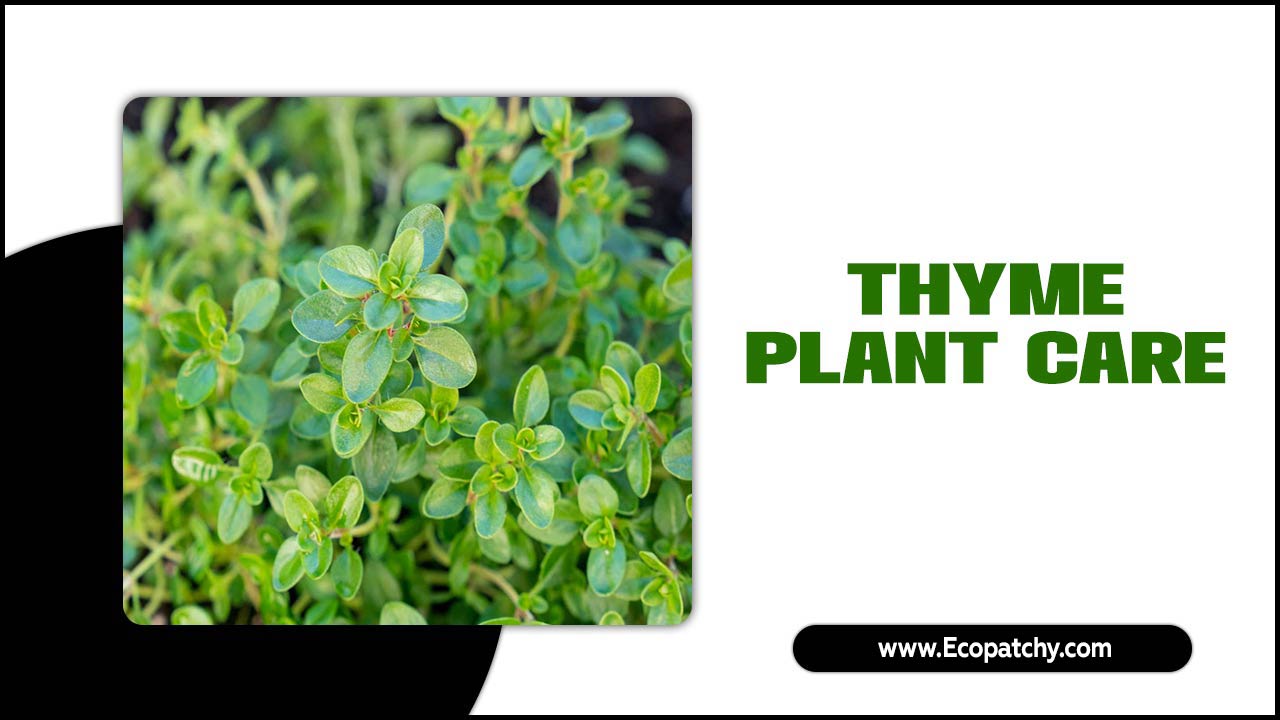
Thyme Plant Care: How To Grow, Harvest & Use
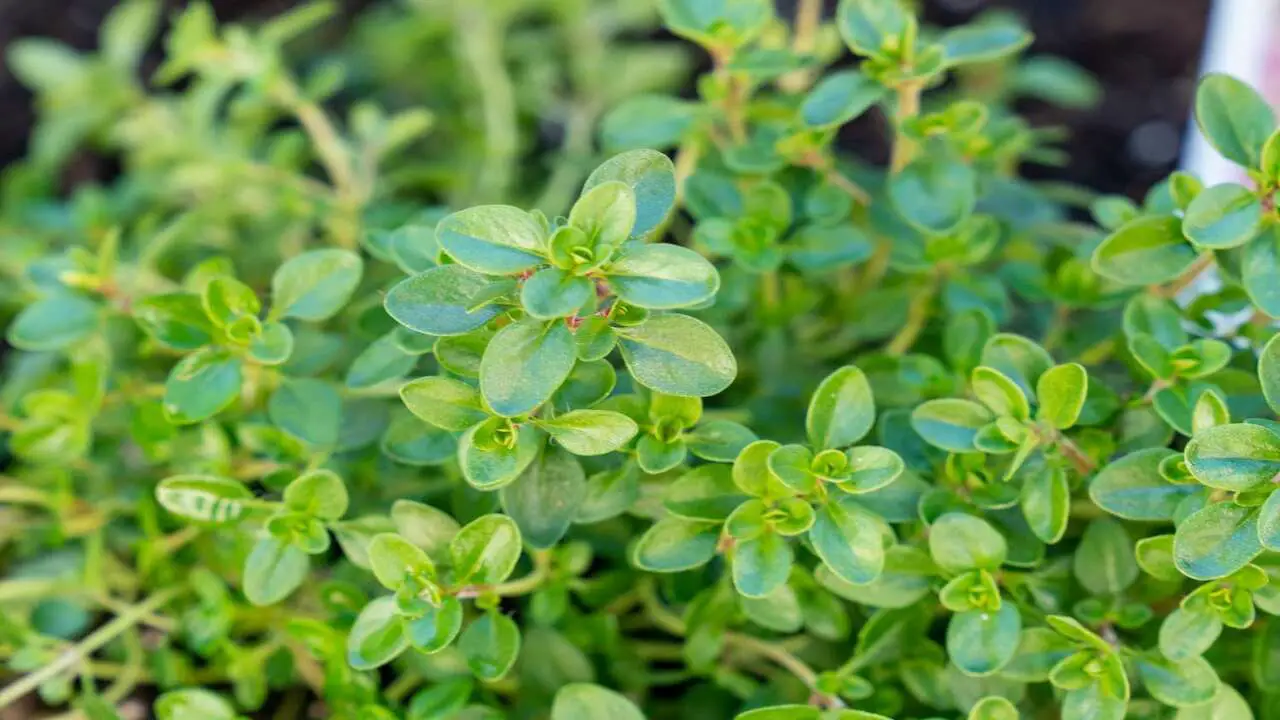
Knowing how to care for thyme plants is essential for both novice and experienced gardeners alike. Thyme, a versatile herb with a myriad of culinary and medicinal uses, requires proper care to thrive and deliver its full potential.
Understanding the importance of thyme plant care is crucial to ensure its longevity and productivity in any garden or herb bed. First and foremost, knowing how to care for thyme plants allows gardeners to provide optimal growing conditions.
Thyme plants thrive in well-drained soil, ample sunlight, and proper watering. By understanding these requirements, gardeners can create an environment that promotes healthy growth and development.
Light
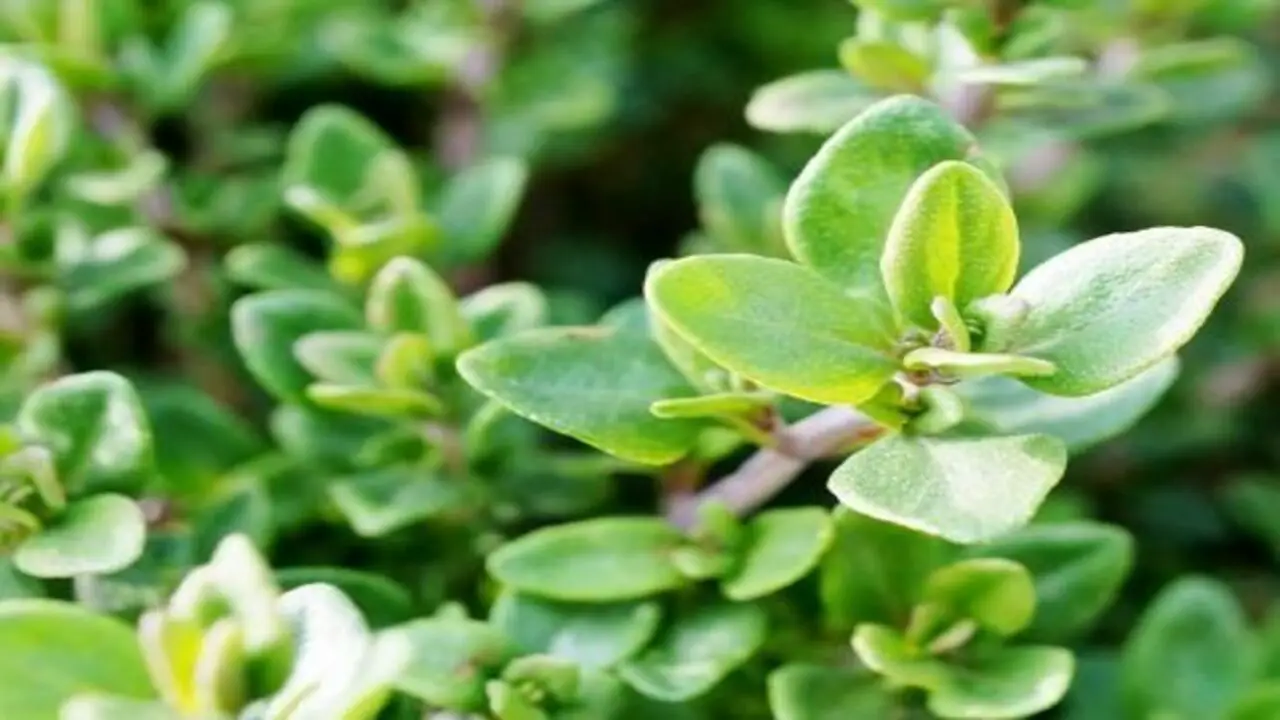
When caring for thyme plants, it is crucial to consider light. Thyme plants thrive in a bright and sunny environment, requiring at least six hours of direct sunlight each day. This herb is famous for being a sun-loving plant, and providing it with the right amount of light is essential for its growth and overall health.
Experts advise placing thyme plants in a location where they can receive full sun to ensure optimal light exposure. This means positioning them in an area that is not shaded by trees or buildings, allowing the plant to bask in the sun’s rays throughout the day. If growing thyme indoors, placing it near a south-facing window or using supplemental grow lights can help provide the necessary light intensity.
Soil
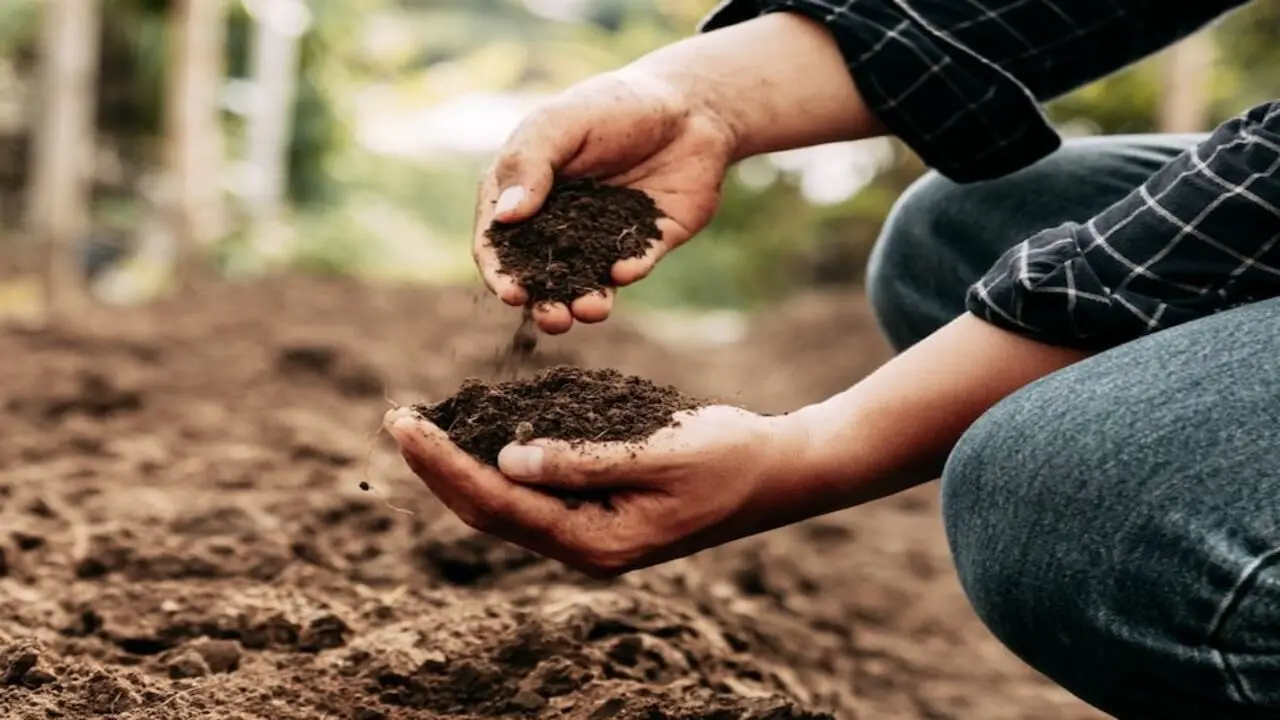
Regarding thyme plant-care, one of the most important factors to consider is the quality of the soil. Thyme plants thrive in well-drained soil that is slightly alkaline with a pH level between 6.0 and 8.0. It is crucial to ensure that the soil is not overly soggy or compacted, as this can lead to root rot and hinder the plant’s growth.
Before planting thyme, it is recommended to amend the soil with organic matter such as compost or aged manure to enhance its fertility and drainage capabilities. To maintain the soil’s optimal condition, regular monitoring and maintenance are necessary.
Thyme plants prefer slightly dry soil, so it is important to avoid overwatering. Watering deeply but infrequently is recommended, allowing the soil to dry out between watering sessions. This helps prevent waterlogged conditions and promotes healthy root development.
Water
Watering is an essential aspect of thyme plant-care. Properly hydrating your thyme plants is crucial for their growth and overall health. Thyme plants require consistent moisture, but it is important to strike a balance and avoid overwatering, as it can lead to root rot and other diseases.
Ideally, thyme plants should be watered deeply once a week, allowing the soil to dry out slightly between watering sessions. This allows the roots to access oxygen and promotes healthy growth. To ensure effective watering, it is recommended to use a watering can or a hose with a gentle spray nozzle.
Direct the water towards the base of the plant, avoiding wetting the foliage excessively. Thyme plants prefer a well-draining soil, so it is advisable to add organic matter, such as compost, to improve the soil’s drainage capabilities.
Temperature And Humidity
Proper temperature and humidity control are essential aspects of Thyme plant-care. Thyme, a popular herb known for its aromatic leaves and medicinal properties, thrives in specific temperature ranges. Ideally, the temperature for Thyme plants should be maintained between 60°F and 75°F (15°C and 24°C).
Extreme heat or cold can adversely affect the growth and overall health of the plant. It is important to provide adequate ventilation and protection from direct sunlight, especially during scorching summer days. Humidity levels also play a significant role in Thyme plant-care.
Thyme plants prefer a moderate level of humidity, ideally around 40% to 50%. Excessive humidity can lead to the development of fungal diseases, while low humidity can cause the leaves to dry out and wilt.
Fertilizer
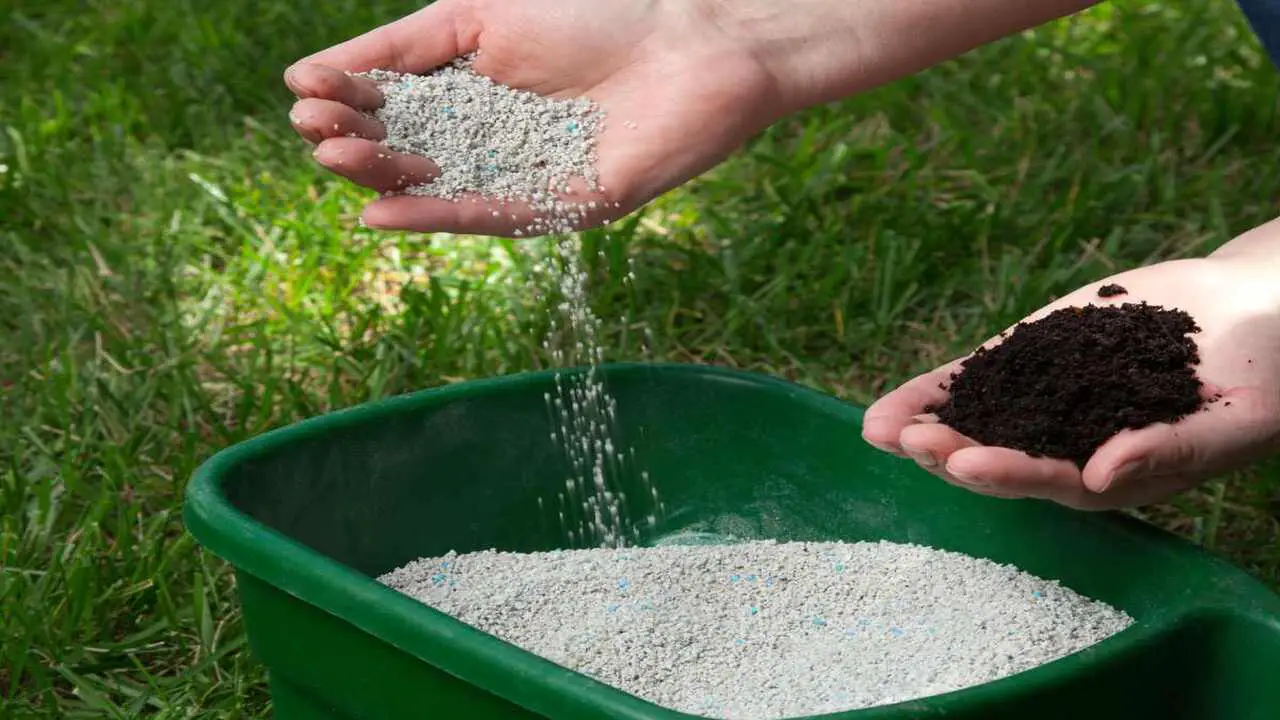
Regarding thyme plant-care, one important aspect that cannot be overlooked is the proper use of fertilizer. Fertilizer plays a crucial role in providing essential nutrients to thyme plants, promoting healthy growth and robust foliage.
Thyme plants, belonging to the mint family require a balanced fertilizer that is rich in nutrients such as nitrogen, phosphorus, and potassium. These elements aid in the development of strong roots and vibrant leaves and enhance the overall health of the plant. Choosing the right fertilizer for thyme plants is crucial.
It is recommended to opt for a slow-release, organic fertilizer that provides a steady supply of nutrients over an extended period. Organic fertilizers derived from natural sources, such as compost or well-rotted manure, are ideal as they not only nourish the plants but also improve soil structure and fertility.
Pruning And Maintenance
Pruning and maintenance are essential aspects of thyme plant-care. Thyme is a versatile herb famous for its aromatic qualities and culinary uses. Requires regular attention to ensure its health and productivity. Pruning, in particular, plays a vital role in maintaining the plant’s shape, promoting new growth, and preventing diseases.
For pruning thyme, it is recommended to start in the early spring when the plant begins to show signs of new growth. The first step is to remove any dead or damaged stems, as they can hinder the plant’s overall health. Additionally, pruning helps to control the size of the thyme plant. They are making it more manageable and appealing in a garden or container.
How To Grow And Harvest Thyme
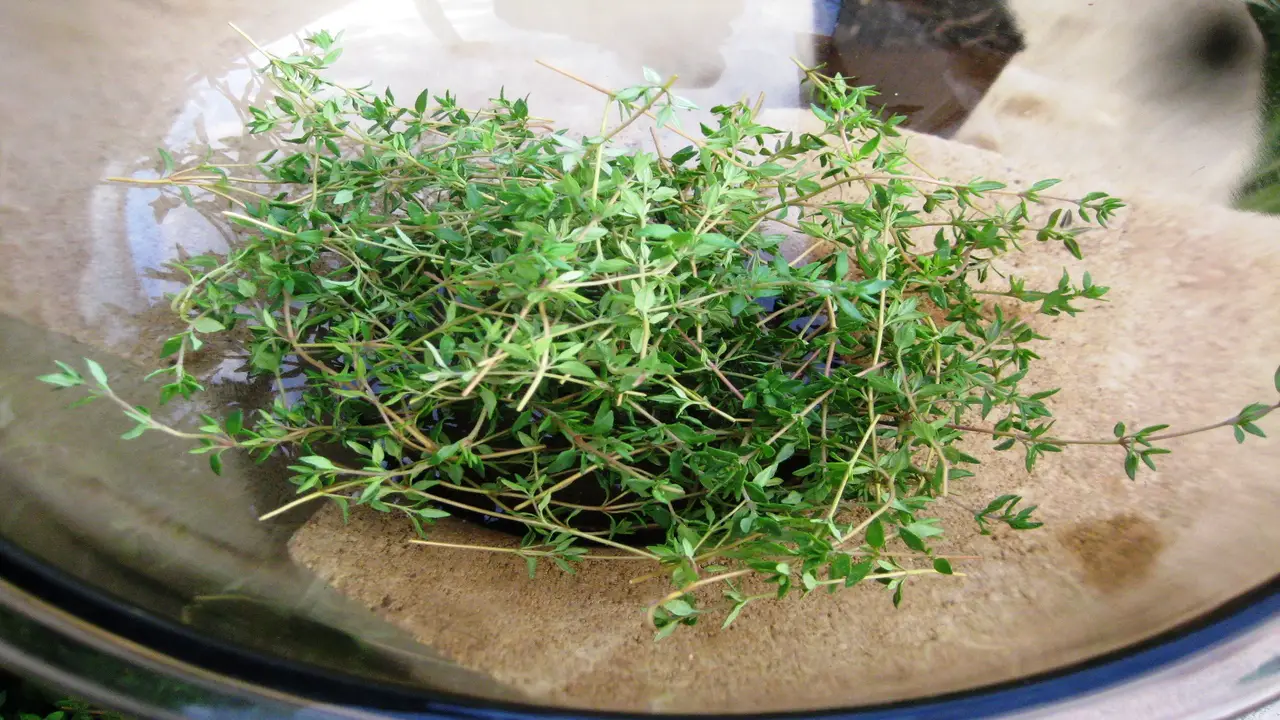
Knowing how to grow and harvest thyme is of utmost importance for individuals seeking to enhance their culinary skills or embark on a journey of sustainable gardening.
Thyme, a versatile herb with a delightful aroma and a myriad of health benefits, has been cherished for centuries for its culinary and medicinal properties. Understanding the intricacies of cultivating and harvesting thyme ensures a steady supply of fresh, flavorful leaves and flowers, which can elevate the taste and presentation of various dishes.
- Choose A Suitable Location: Thyme thrives in well-drained soil and prefers full sun exposure. Select a spot in your garden or a container with good drainage.
- Prepare The Soil: Thyme prefers slightly alkaline soil with a pH level of 6.08.0. Amend the soil with organic matter, such as compost, to improve its fertility and drainage.
- Planting: Start thyme seeds indoors 68 weeks before the last frost date, or you can purchase young thyme plants from a nursery. Plant the seeds or seedlings in the prepared soil, spacing them about 12 inches apart.
- Watering: Thyme is drought tolerant, so water moderately to avoid overwatering. Let the soil dry out between waterings to prevent root rot.
- Mulching: Apply a layer of organic mulch around the plants to help retain moisture, control weeds, and regulate soil temperature.
How To Use Thyme

Knowing how to use thyme is of utmost importance for individuals seeking to enhance their culinary skills and embrace the full potential of this versatile herb.
Thyme, a fragrant and flavorful herb, has long been prized for its culinary and medicinal properties. Its distinctive taste, with hints of lemon, mint, and earthiness, adds depth and complexity to a wide range of dishes, from soups and stews to marinades and sauces.
- Start by selecting fresh thyme sprigs or dried thyme leaves from a reputable source.
- Rinse fresh thyme sprigs under cool water and pat them dry with a paper towel.
- If using dried thyme leaves, measure the desired amount needed for your recipe.
- Thyme can be handy in various dishes such as soups, stews, sauces, roasted meats, and vegetables.
- To release the flavor of fresh thyme, gently strip the leaves from the stem and chop them finely before adding them to your dish.
- For dried thyme, simply sprinkle the desired amount directly into your recipe.
- Thyme can be added at the beginning of cooking for a more subtle flavor or towards the end for a bolder taste.
- Adjust the amount of thyme based on personal preference and the flavor profile you want to achieve.
- Store fresh thyme in the refrigerator, wrapped in a damp paper towel, and placed in a plastic bag for up to a week.
Common Insect & Disease Problems For Thyme Plants
Understanding the common insect and disease problems that can affect thyme plants is of utmost importance for any horticulturist or gardener. Thyme is a versatile herb handy in culinary and medicinal applications. It is highly susceptible to various pests and diseases that can severely impact its growth and overall health.
- Aphids: Thyme plants can be susceptible to aphid infestations, which can cause damage by sucking sap from the plant. Look for clusters of small, soft-bodied insects on the leaves and stems.
- Spider Mites: These tiny pests can be a common problem for thyme plants. They cause damage by feeding on the plant’s sap, leading to yellowing leaves and webbing on the plant.
- Thrips: Thrips are another insect pest that can affect thyme plants. They feed on the leaves, causing them to become discolored and distorted.
- Powdery Mildew: Thyme plants can be vulnerable to powdery mildew. A fungal disease that appears as a white, powdery coating on the leaves. It can weaken the plant and lead to leaf drop if left untreated.
- Root Rot: Overwatering or poorly drained soil can lead to root rot in thyme plants. This disease causes the roots to become decayed and can
Conclusion
Ultimately, caring for a thyme plant is a simple process that requires attention and consistency. Thyme, with its delicate leaves and fragrant aroma, is a versatile herb that can be handy in a variety of culinary dishes. By following these tips and guidelines, your thyme plant is sure to thrive and provide you with fresh, aromatic herbs for a variety of culinary uses.
With proper care, your thyme plant will continue to grow and flourish, bringing beauty and flavor to your home or garden. Remember always to consult a professional or do thorough research before trying new techniques or remedies for any plant care concerns. If you read the above outline properly, we hope you now understand Thyme Plant Care
FAQ
1.How Often Should I Water My Thyme Plant?
Thyme plants prefer well-drained soil, so water them thoroughly once a week, allowing the soil to dry out between waterings. In order to thrive and reach their full potential, these hardy herbs have specific preferences for their growing conditions.
2.Does Thyme Require Full Sunlight?
Yes, thyme plants thrive in full sunlight and should receive at least 6-8 hours of direct sunlight per day. Thyme plants, also known as Thymus vulgaris, are a popular herb in the culinary world. These small but mighty plants are part of the mint family and are native to the Mediterranean region.
3.Should I Prune My Thyme Plant?
Yes, regular pruning is beneficial for thyme plants. Trim back any dead or woody stems, and after flowering. Trim the plant to maintain its shape and encourage new growth.
4.How Can I Prevent Pests From Attacking My Thyme Plant?
Thyme is generally resistant to pests, but you can keep them away by providing good air circulation. Avoiding overwatering and periodically inspecting the plant for signs of pests such as aphids or spider mites. If necessary,
5.How Should I Fertilize My Thyme Plant?
Thyme plants are not heavy feeders. Apply a balanced, slow-release fertilizer once or twice a year, following the package instructions. Avoid over-fertilizing, as it can lead to excessive foliage growth and less flavor in the leaves.






